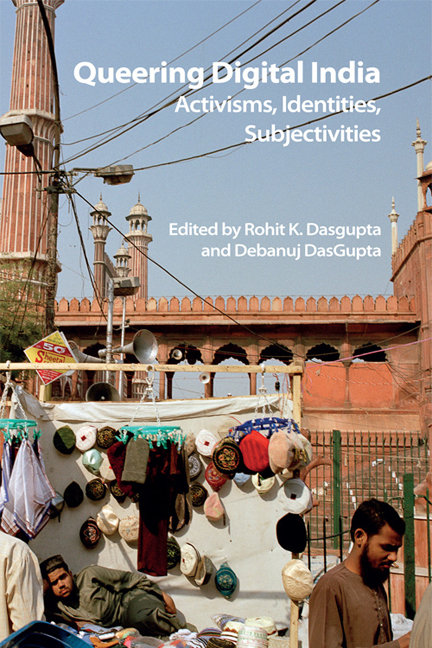5 - Digitally Untouched: Janana (In) Visibility and the Digital Divide
Published online by Cambridge University Press: 28 April 2021
Summary
Introduction
On 11 March 2016 Shashi Tharoor, a Member of Parliament from the Indian National Congress, introduced a bill in the parliament that would decriminalise homosexuality. This was Tharoor's second attempt at trying to have this bill passed. The bill was defeated again on 11 March to Tharoor's and many other people's frustration. On 20 March 2016, Aatish Taseer wrote an op-ed for the New York Times in which he described the frustration of a gay lawyer with Section 377, authoritarian government and the idea of a rright to love’ which could be the loophole when the Supreme Court of India decides on Section 377 again. Since December 2013 when the Supreme Court of India upheld Section 377, the 1860 colonial law that criminalises homosexual activity came to the forefront of international media attention. There has been much interest in the role of social media and media in general in moving the LGBTQ rights movement in India forward. Social media became the site for protest and also the study of protests. Growth of social media sites like Facebook, WhatsApp, etc. is celebrated for fostering the formation of popular queer publics. The passage of legal verdicts related to the anti-sodomy provisions (specifically Section 377) and transgender identity in India has garnered much transnational internet activism in the form of blogs, Facebook posts and the viral circulation of images from protest rallies. Images of queer bodies are circulating in the digital space. Yet, janana as a queer body is missing from this space. I argue that while the digital is freely accessible and visibilises queer bodies in India, and it should be celebrated as a space for activism and protest, it is not the utopian space that it is framed as. The digital space leaves behind bodies, jananas specifically, that do not have access to this space, that do not know the perils of being in the digital space and that do not have the language to communicate in or about the digital space. Images of desiring or longing bodies are circulated through access to technology that jananas do not have.
- Type
- Chapter
- Information
- Queering Digital IndiaActivisms, Identities, Subjectivities, pp. 97 - 111Publisher: Edinburgh University PressPrint publication year: 2018



